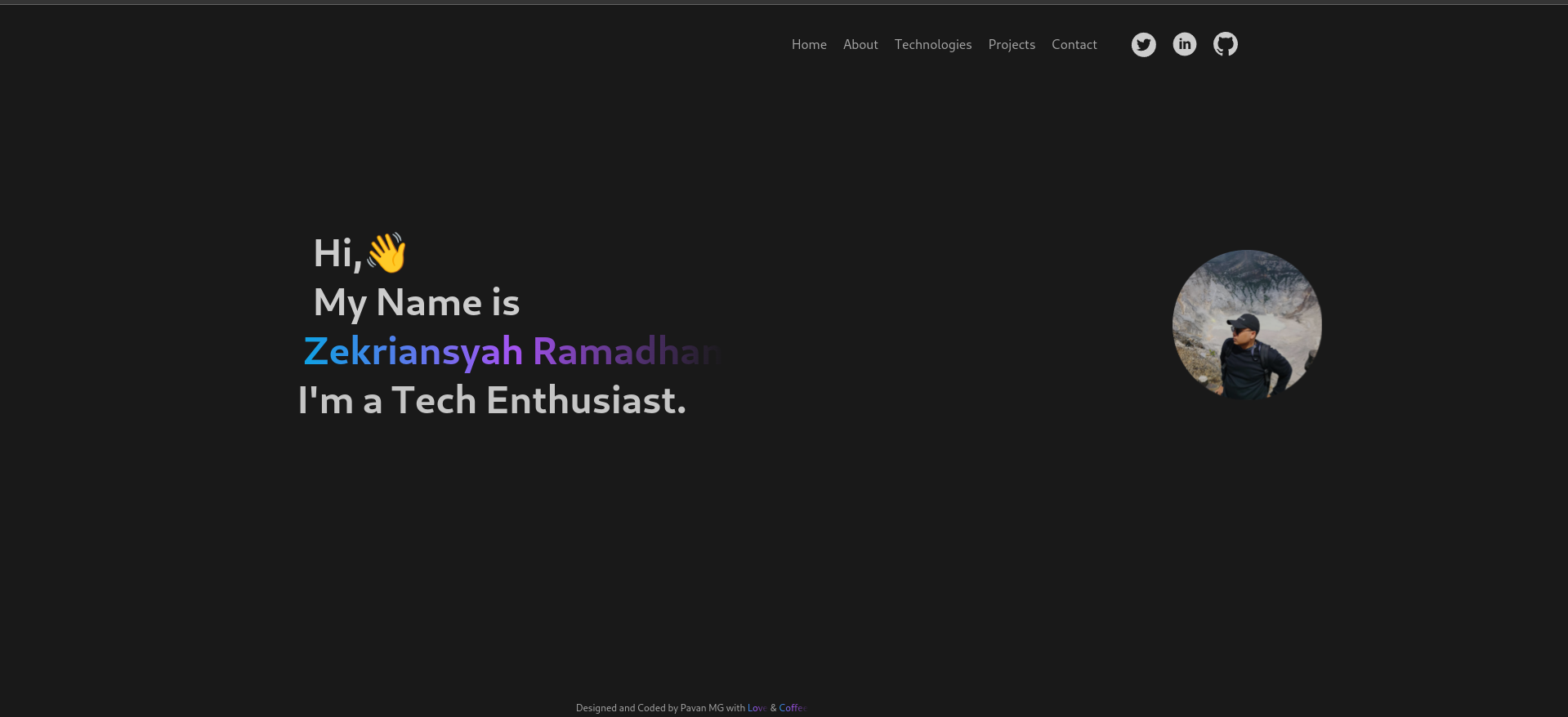How This Site Was Built
I’ve always wanted a simple portfolio website that also functions as a blog. Initially, I experimented with creating a portfolio site using the template shown below. While it worked well as a portfolio, it lacked blogging capabilities. I discovered this template on GitHub: React Developer Portfolio Template. Although it’s sleek and straightforward, its features are somewhat limited.

At one point, I considered separating the portfolio and blog into two different platforms. For the portfolio, I would continue using the React template mentioned earlier, while for the blog, I thought about using Ghost or WordPress. However, both of these platforms seemed outdated to me. While WordPress and Ghost are robust options, they tend to be resource-intensive and come with many features I don’t need.
After some research, I discovered a tool that perfectly fits my needs: a Static Site Generator (SSG). Delving deeper into SSGs, I sought one that was easy to use but still offered sufficient functionality for my requirements. This is where I found Zola Static Site Generator. As a beginner, I began exploring how SSGs work and specifically how to use Zola.
Zola is built with Rust, a programming language known for its flexibility, speed, and scalability. According to various sources, Rust is currently one of the fastest languages in terms of data processing. This convinced me to learn how to deploy a website using Zola on my server. With Zola, I was able to create a combined portfolio and blog site that met all my needs.
If you’re interested in building a similar website, you can check out the official documentation here: Zola Documentation.
Once I become more proficient with all of Zola’s features, I plan to create a tutorial on how to set it up.
Thank you!